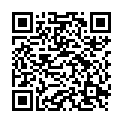|
|
|
| Module code: E933 |
|
2V (2 hours per week) |
|
2 |
| Semester: 9 |
| Mandatory course: no |
Language of instruction:
German |
Assessment:
Written examination
[updated 13.03.2010]
|
E933 Electrical Engineering, Master, ASPO 01.10.2005
, semester 9, optional course
|
30 class hours (= 22.5 clock hours) over a 15-week period.
The total student study time is 60 hours (equivalent to 2 ECTS credits).
There are therefore 37.5 hours available for class preparation and follow-up work and exam preparation.
|
Recommended prerequisites (modules):
None.
|
Recommended as prerequisite for:
|
Module coordinator:
Prof. Dr. Volker Schmitt |
Lecturer:
Prof. Dr. Volker Schmitt
[updated 13.03.2010]
|
Learning outcomes:
Students will become acquainted with the problem and necessity of testing electronic circuits. Students will be taught the most common test procedures and will be able to design testable electronic circuits. They will also be able to decide on the most appropriate test method for a specific problem and to further their own understanding of other more specialist topics in electronic testing.
[updated 13.03.2010]
|
Module content:
- Introduction, verification, validation, identification
- Fault modelling, bonding faults, fault equivalence, fault dominance
- Test pattern generation, Boolean difference, path sensitization, the D-algorithm
- Fault simulation, methods, testability analysis, controllability,
observability, statistical techniques, estimation methods
- Design for testability
- Interrupt errors, delay faults, Reed-Muller form, test bus, self-testing
integrated circuits
- Test pattern generator, counters, linear and nonlinear feedback shift register,
test data compression, signature analysis
- Boundary scan testing
[updated 13.03.2010]
|
Teaching methods/Media:
Overhead transparencies, master copies for photocopying
[updated 13.03.2010]
|
Recommended or required reading:
DAEHN, W.: Testverfahren in der Mikroelektronik; Springer, 1997
AUER, A.; KIMMELMANN, R.: Schaltungstest mit Boundary-Scan; Hüthig, 1996
Einführung in das Boundary-Scan Testverfahren; Hewlett Packard
HP Boundary-Scan Tutorial and BSDL Reference Guide; Hewlett Packard
The ABCs of Boundary-Scan Test; Philips
[updated 13.03.2010]
|


